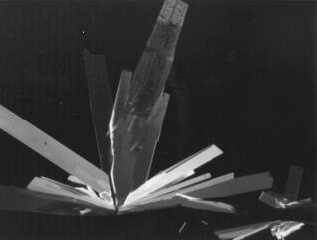 |
 |
|
 |
|
 |
|  |
|  |
|
 |
From: Tor Olav Kristensen
Subject: Re: Since there no longer is a off-topic group ...
Date: 2 Jan 2001 21:06:08
Message: <3A5288E0.4546F4DE@online.no>
|
|
 |
|  |
|  |
|
 |
Dearmad wrote:
>
> The inside of paprika? Dear man, but my god! The codliver oil I can
> undestand, however Paprika is taking it just too far!
Sorry. It was a just "a momentary lapse of reason".
Regards from Tor Olav
(who still think it would be nice to be inside
a red paprika with strong light outside. =)
--
mailto:tor### [at] hotmail com
http://www.crosswinds.net/~tok/tokrays.html com
http://www.crosswinds.net/~tok/tokrays.html
Post a reply to this message
|
 |
|  |
|  |
|
 |
|
 |
|  |
|  |
|
 |
In article <3A5284EA.17FA70A7@online.no>, Tor Olav Kristensen
<tor### [at] online no> wrote:
> (who's running to his encyclopaedia to look up "iridescent")
finish {
irid {AMOUNT
thickness FLOAT
turbulence TURBULENCE
}
}
:-)
--
Christopher James Huff
Personal: chr### [at] mac no> wrote:
> (who's running to his encyclopaedia to look up "iridescent")
finish {
irid {AMOUNT
thickness FLOAT
turbulence TURBULENCE
}
}
:-)
--
Christopher James Huff
Personal: chr### [at] mac com, http://homepage.mac.com/chrishuff/
TAG: chr### [at] tag com, http://homepage.mac.com/chrishuff/
TAG: chr### [at] tag povray povray org, http://tag.povray.org/
<>< org, http://tag.povray.org/
<><
Post a reply to this message
|
 |
|  |
|  |
|
 |
From: ingo
Subject: Re: Since there no longer is a off-topic group ... - 1 attachments
Date: 3 Jan 2001 00:46:59
Message: <Xns901E43265seed7@povray.org>
|
|
 |
|  |
|  |
|
 |
in <3A528654.CD0AB098@online.no> Tor Olav Kristensen wrote:
>
>Very clear illustrations of the phenomena,
>but what is a 1/4 lambda plate ?
>
A quarter wave plate is made out of a birefringed material (thin plates of
mica). A birefringed material makes light of orthogonal polarizations
traverse the material at different velocities. One wavefront will be ahead
of the other by a distance that depends on the thicknes of the material.
wave plate.
It is for example used to determine wether you have circular polarized
light or a combination of linear- and non-polarized light.
>I didn't know that minerals had these properties as well.
>Did you use some kind of (semi-)transparent minerals ?
>Do you know of any "everyday" mineral materials that I
>could use for experimenting ?
>And what are "schliffs" ?
To start with the latter, "schliffs" are higly polished and very thin
slices of stone/mineral. If you make them thin enough you can look throug
every stone. In for example a granite there are several minerals, each
with its own optical properties. In polarized light each will show in a
different colour and density.
Attatched a micrograph of Asperine in polarized light. Cant find the
colour print :(
Ingo
--
Photography: http://members.home.nl/ingoogni/
Pov-Ray : http://members.home.nl/seed7/
Post a reply to this message
Attachments:
Download 'asperine.jpg' (7 KB)
Preview of image 'asperine.jpg'

|
 |
|  |
|  |
|
 |
From: Tor Olav Kristensen
Subject: Re: Since there no longer is a off-topic group ... - 1 attachments
Date: 4 Jan 2001 19:57:24
Message: <3A551B97.91DEDA35@online.no>
|
|
 |
|  |
|  |
|
 |
ingo wrote:
>
> in <3A528654.CD0AB098@online.no> Tor Olav Kristensen wrote:
> >
> >Very clear illustrations of the phenomena,
> >but what is a 1/4 lambda plate ?
> >
>
> A quarter wave plate is made out of a birefringed material (thin plates of
> mica). A birefringed material makes light of orthogonal polarizations
> traverse the material at different velocities. One wavefront will be ahead
> of the other by a distance that depends on the thicknes of the material.
> wave plate.
> It is for example used to determine wether you have circular polarized
> light or a combination of linear- and non-polarized light.
>
> >I didn't know that minerals had these properties as well.
> >Did you use some kind of (semi-)transparent minerals ?
> >Do you know of any "everyday" mineral materials that I
> >could use for experimenting ?
> >And what are "schliffs" ?
>
> To start with the latter, "schliffs" are higly polished and very thin
> slices of stone/mineral. If you make them thin enough you can look throug
> every stone. In for example a granite there are several minerals, each
> with its own optical properties. In polarized light each will show in a
> different colour and density.
Thank you very much for explaining Ingo.
I wish I had such "stuff" to play with.
> Attatched a micrograph of Asperine in polarized light. Cant find the
> colour print :(
Nice - I would love to see such images in colours !
Tor Olav
--
mailto:tor### [at] hotmail com
http://www.crosswinds.net/~tok/tokrays.html com
http://www.crosswinds.net/~tok/tokrays.html
Post a reply to this message
|
 |
|  |
|  |
|
 |
From: Tor Olav Kristensen
Subject: Re: Since there no longer is a off-topic group ...
Date: 4 Jan 2001 19:59:11
Message: <3A551C04.46391A83@online.no>
|
|
 |
|  |
|  |
|
 |
Chris Huff wrote:
>
> In article <3A5284EA.17FA70A7@online.no>, Tor Olav Kristensen
> <tor### [at] online no> wrote:
>
> > (who's running to his encyclopaedia to look up "iridescent")
>
> finish {
> irid {AMOUNT
> thickness FLOAT
> turbulence TURBULENCE
> }
> }
>
> :-)
Ahh .... I'll try out this.
Thanks.
Tor Olav
--
mailto:tor### [at] hotmail no> wrote:
>
> > (who's running to his encyclopaedia to look up "iridescent")
>
> finish {
> irid {AMOUNT
> thickness FLOAT
> turbulence TURBULENCE
> }
> }
>
> :-)
Ahh .... I'll try out this.
Thanks.
Tor Olav
--
mailto:tor### [at] hotmail com
http://www.crosswinds.net/~tok/tokrays.html com
http://www.crosswinds.net/~tok/tokrays.html
Post a reply to this message
|
 |
|  |
|  |
|
 |
|
 |
|  |




![]()